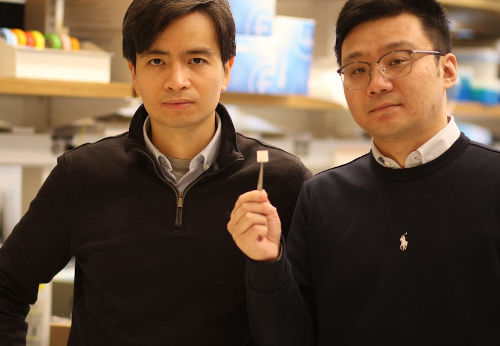Regrowing Cartilage in a Damaged Knee Gets Closer to Fixing Arthritis

UConn researchers Thanh Nguyen, left, and Yang Liu, with the tissue scaffold made out of a biodegradable polymer that they say holds promise for treating ailments like arthritis (courtesy of Thanh Nguyen).
UConn bioengineers successfully regrew cartilage in a rabbit’s knee, a promising hop toward healing joints in humans, they report in the January 12 issue of Science Translational Medicine.
Arthritis is a common and painful disease caused by damage to our joints. Normally pads of cartilage cushion those spots. But injuries or age can wear it away. As cartilage deteriorates, bone begins to hit bone, and everyday activities like walking become terribly painful.
The best treatments available try to replace the damaged cartilage with a healthy piece taken from elsewhere in the body or a donor. But healthy cartilage is in limited supply. If it’s your own, transplanting it could injure the place it was taken from; if it’s from someone else, your immune system is likely to reject it.
The best possible treatment would be to regrow healthy cartilage in the damaged joint itself. Some researchers have tried amplifying chemical growth factors to induce the body to grow cartilage on its own; other attempts rely on a bioengineered scaffold to give the body a template for the fresh tissue. But neither of these approaches works, even in combination.
“The regrown cartilage doesn’t behave like native cartilage. It breaks, under the normal stresses of the joint,” says UConn bioengineer Thanh Nguyen, an assistant professor in the Department of Mechanical Engineering.

